
Gothic-style Lodge, designed by the engineer James Simpson, and built 1850-52.
Shown above are the former offices and stores for the Lambeth Waterworks, designed by the engineer James Simpson (1799-1869). Built in 1850-52, the Grade II listed building is of "stock brick in Flemish bond with sandstone dressings and slate roof with panelled stock brick chimneystacks" (listing text). As the listing text also notes, the building is asymmetrical, with gables, a campanile at one end and a lean-to at the other. The gate is the main access point to the complex from the Portsmouth Road in Surbiton, near the historic market town of Kingston-on-Thames, Surrey (now a part of Greater London).


Left: A closer view of the campanile. Right: The two-storey buttressed former boiler house, with gabled section beyond.
The whole of the former Lambeth Waterworks complex, largely designed by Simpson, and formally opened in 1853, was a major and innovative project. It greatly interested Dr John Snow, a key figure in the discovery that cholera was transmitted by contaminated water. Propitiously located on the site of a hot spring once considered a sovereign remedy for eye infections (Hall 322 and 323n), the company now supplied the Surrey side of London with its water. The effects of its purification processes were dramatic and highly supportive of Snow's controversial view. For example, he notes in his book about cholera (1855), "Waterloo Road, 1st part, suffered almost as much as St. Saviour’s in 1849, and had but a single death in 1853; it is supplied almost exclusively by the Lambeth Company" (74).

The buttressed two-storey engine house, with its romanesque windows and cruciform arrow slits, with an "ornamental square tower of two stages with crenellated parapet, blank panel" etc (listing for "Seething Wells Halls of Residence"").
The site included pump, engine and boiler housings; a huge coal store capable of holding 1500 tons of coal; an accumulator tower; offices; an appropriately industrial-looking ornamental fountain; and historically important filtration beds just across the Portsmouth Road, beside the Thames. The main part of the site has now been converted for use as student accommodation, although various listed historic structures remain — the engine house is also Grade II listed. The fight to keep the filtration beds continues.
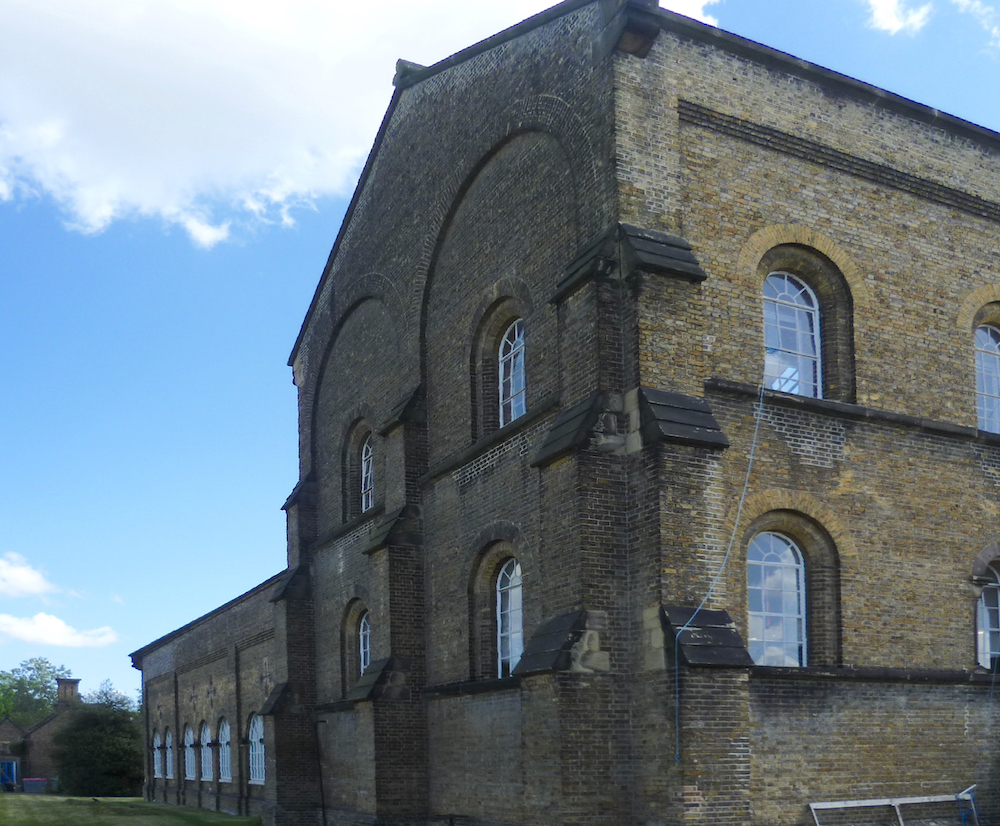
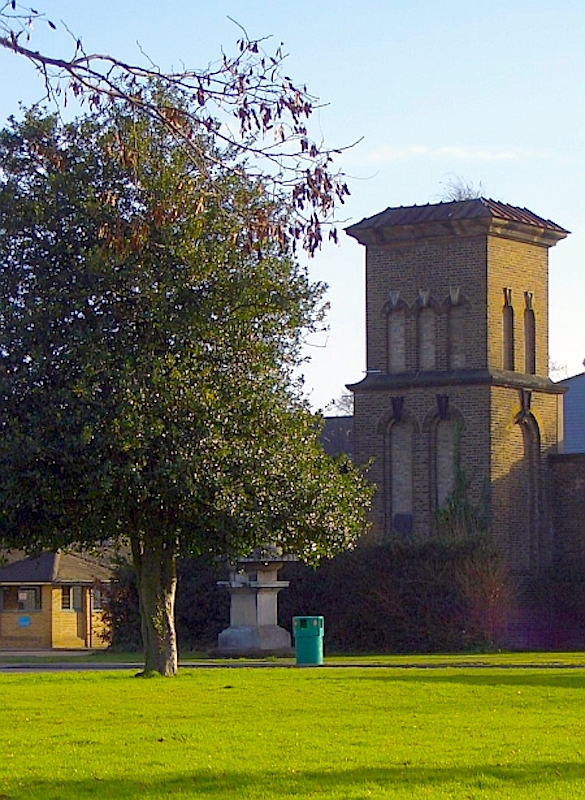
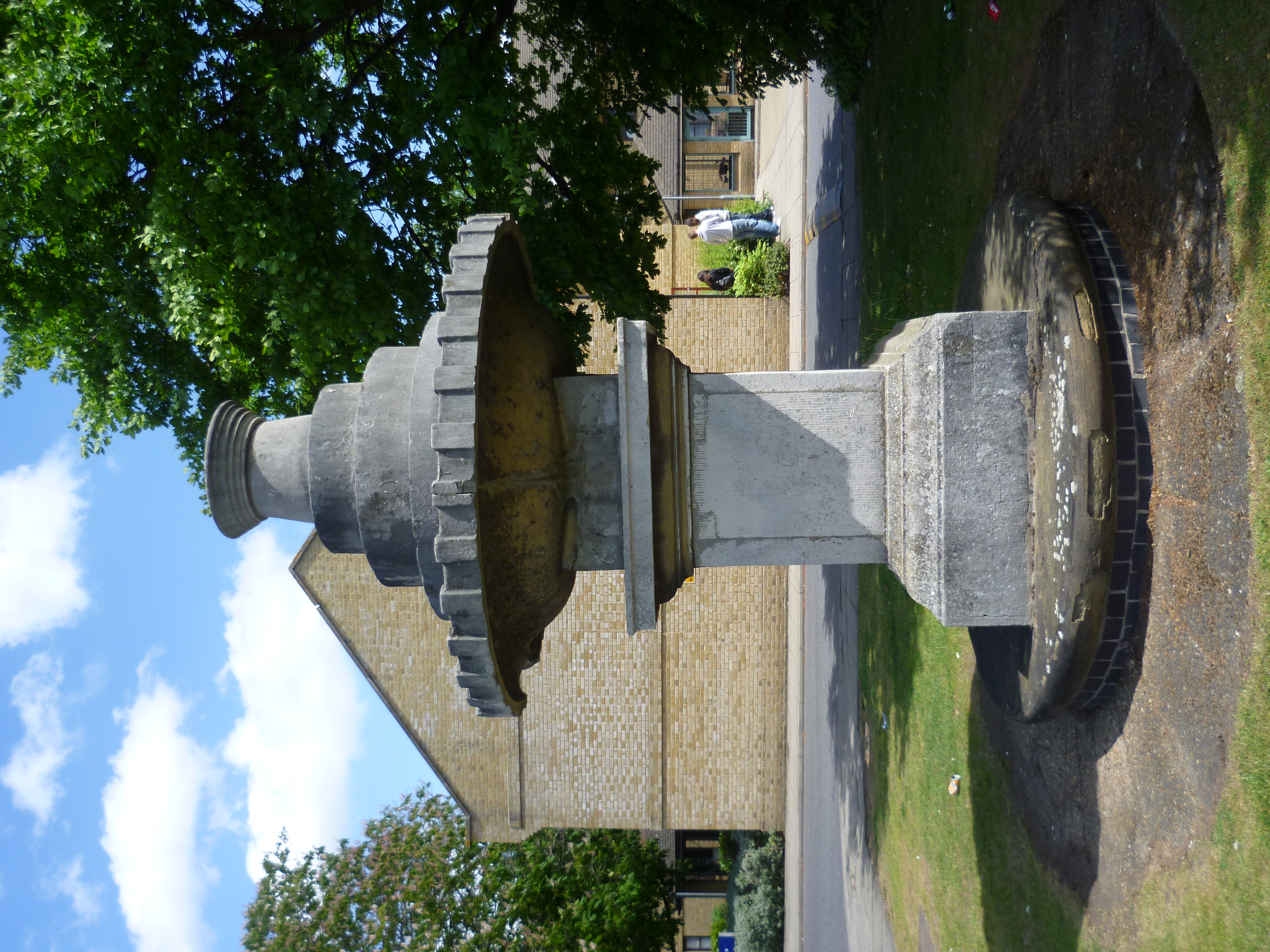
Left to right: (a) End of Building No. I (the former pump house) on the Portsmouth Road side. (b) Square tower attached to the single-storey, unroofed former coal store, designed by Simpson and built in 1858. (c) The ornamental fountain, its main circular stone almost like a cogwheel, also designed by Simpson.
The waterworks were originally intended to operate from Chelsea — indeed, the ornamental fountain is called the Chelsea fountain. But it was moved away from the tidal part of the river. Even here in Surbiton the amount of mud on the river banks meant that the water had to be taken in from further along, in West Molesey. According to Grace's Guide, when opened in 1853, the waterworks "used four 600 horse-power steam engines to pump ten million gallons from its filter beds to London." Under the coal store is a tunnel through which coal was taken to the riverside coal wharf. With its heavy machinery long since removed, but its impressive iron columns still in place, Building No. I is now a gym, the Nuffield Health, Fitness and Well-Being Centre.
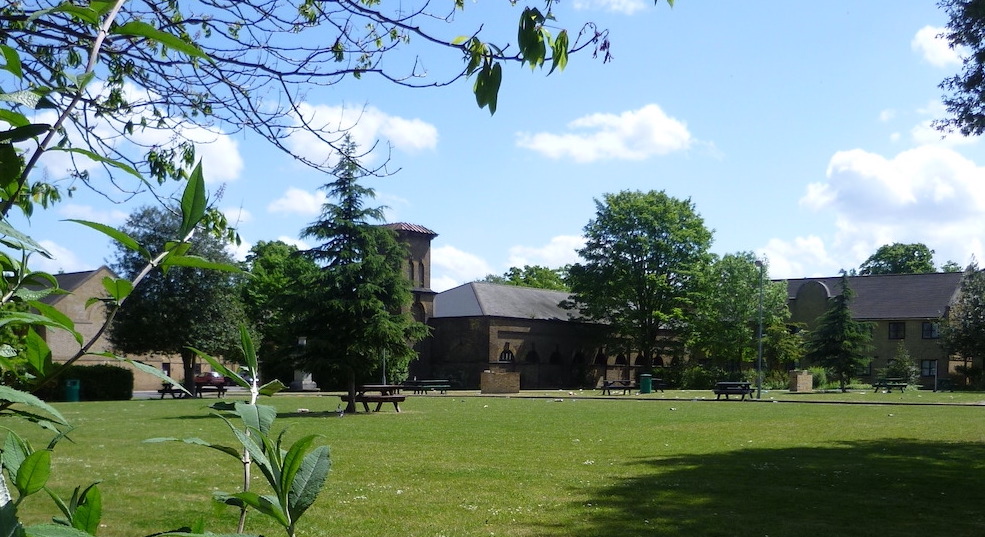
The present green, shown above, is supplied with benches and has an air of serenity, very different from the atmosphere it must have had in Victorian times and the early twentieth-century.
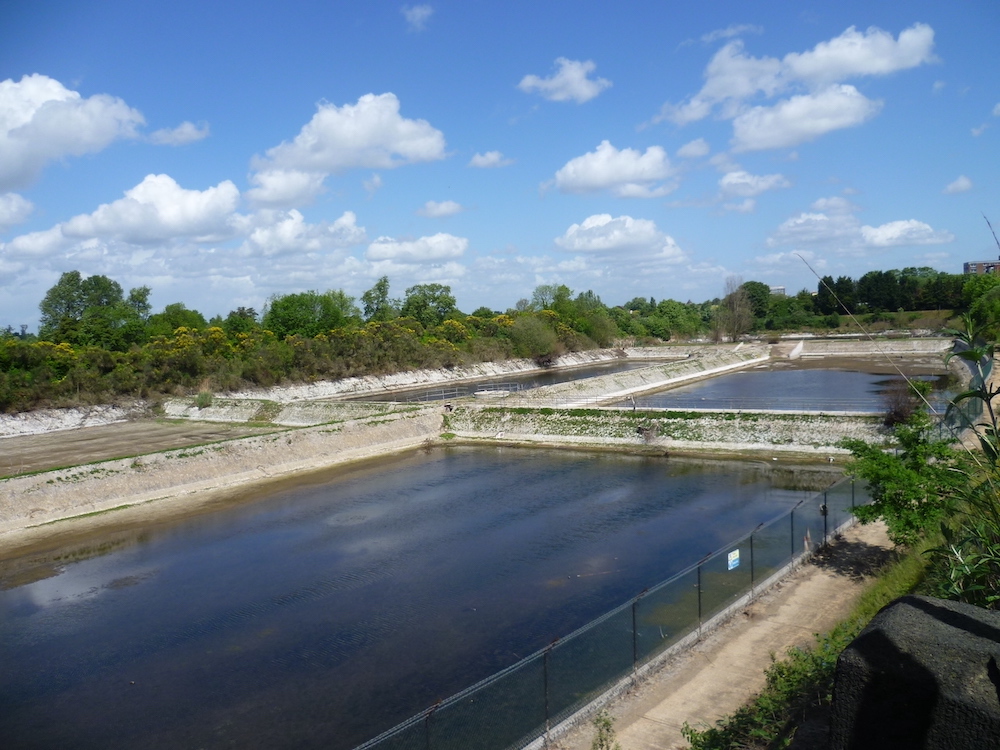
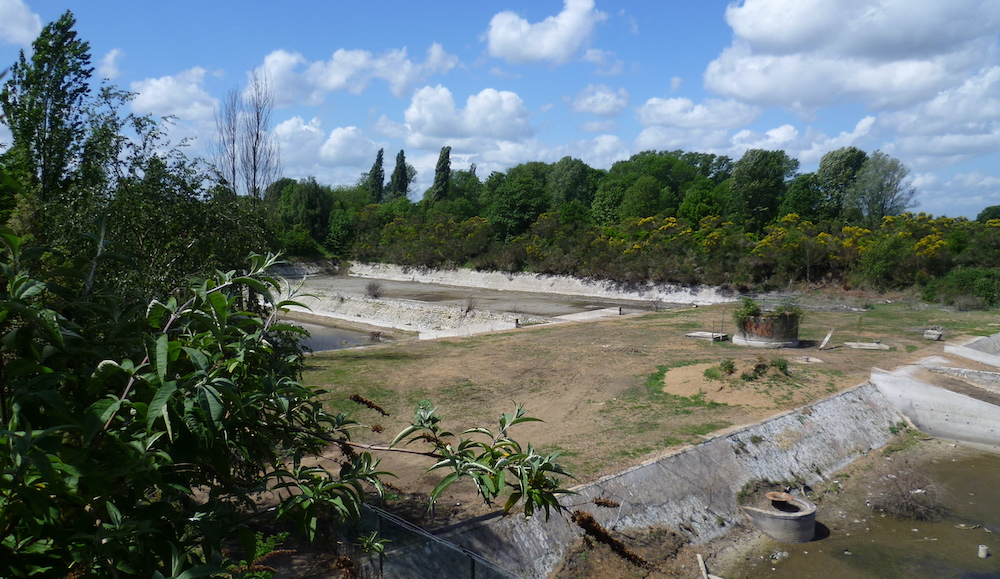
What remains of the reservoirs into which the water was pumped (left) and the filter beds into which it was passed (right) at the river side, across the Portsmouth Road.
Simpson had been working on the use of filter beds to purify water since the later 1820s. At first there were only four filter beds here, each with its own inlet pipe, but more were added:
They are enclosed by vertical sides of brickwork, and their form in plan is somewhat peculiar. Those sides which are at right angles to the line of the river are straight; but the other two sides each filter-bed are each formed of a pair of horizontal arches with their concave sides next the bed, these arches springing from the ends of the side walls of the bed, and from the ends of a kind of partition wall which partly divides each bed into two parts. The height of this partition wall falls by a series of steps until at the central part of its length its top is below the water level. The bottoms of the beds are formed of slate slabs, laid with the joints 1/2 in. open, and supported by dwarf walls of brickwork, so that a shallow chamber for the reception of the filtered water is formed beneath them. [Colburn and Maw 44]
These days the reservoirs are used for recreational purposes and the filter beds are a haven for wildlife. How long they will escape redevelopment is uncertain. But, so far, what is left of the whole site is still an impressive testimony to Victorian engineering and construction, the early tunnels to the Thames being a particular source of interest now. Most importantly, Seething Wells reminds us of Simpson's achievement. His innovations in providing clean water were vital to the health of the population: his work "heralded a new age of public health technology.... His accomplishment sustained the urbanization of Britain and was readily exported to colonial towns and throughout the world" (Broich).
Photographs and text by Jacqueline Banerjee. You may use these images without prior permission for any scholarly or educational purpose as long as you (1) credit the photographer and (2) link your document to this URL or cite the Victorian Web in a print document.
Links to related material
- Steps up to the entrance of Building no. I, with a decorative roundel/window
- Seething Wells (illustration in The Book of the Thames)
- John Snow and Waterborne Diseases
- Public Health (sitemap)
Bibliography
Broich, John. "Simpson, James (1799–1869), waterworks engineer." Oxford Dictionary of National Biography. Online ed. Web. 2 November 2022.
Colburn, Z. and W H Maw. The Waterworks of London. Oxford: Oxford University Press, 1867. Internet Archive. Contributed from the collections of Oxford University. Web. 1 November 2022.
Former Lambeth Waterworks District Offices and Stores Building. Historic England. Web. 1 November 2022.
Former Lambeth Waterworks Engine House and Pump House (Building No. 1). Historic England. Web. 1 November 2022.
James Simpson. Grace's Guide. Web. 1 November 2022.
Seething Wells Halls of Residence, Kingston University, Portsmouth Road, Surbiton, KT6 5PJ. Historic England. Web. 1 November 2022.
Snow, John. On the Mode of Communication of Cholera. 2nd ed. London: Churchill, 1855. Google Books. Free to read. Web. 2 November 2022.
Created 2 November 2022